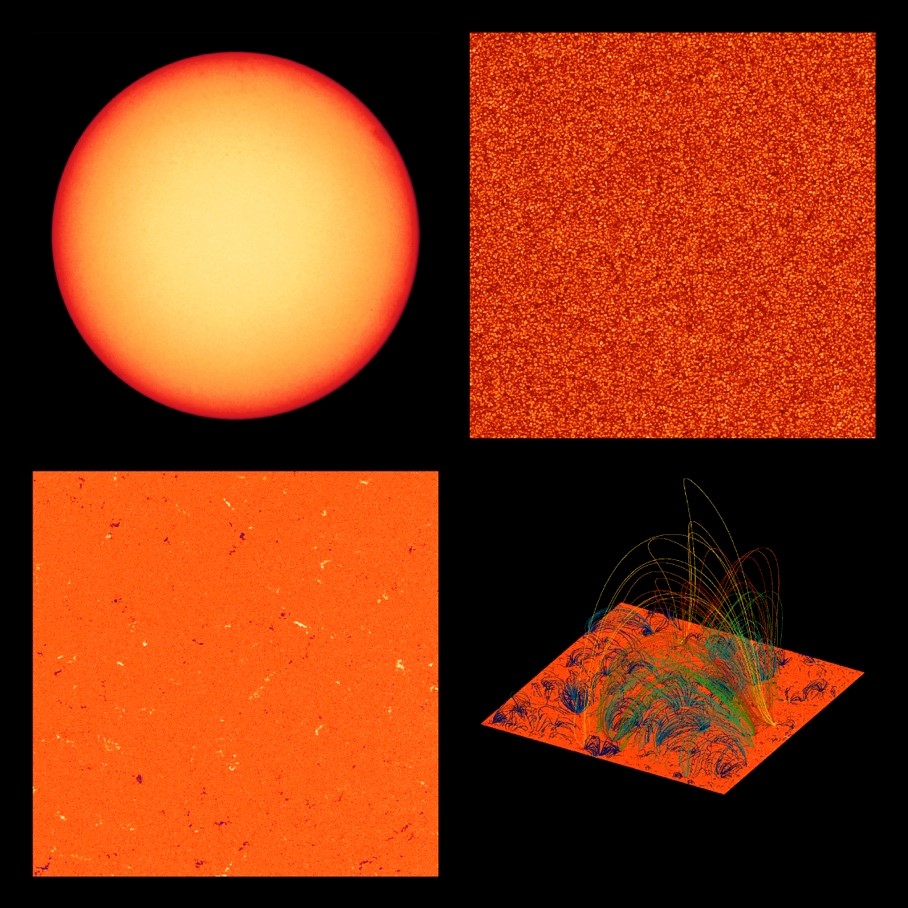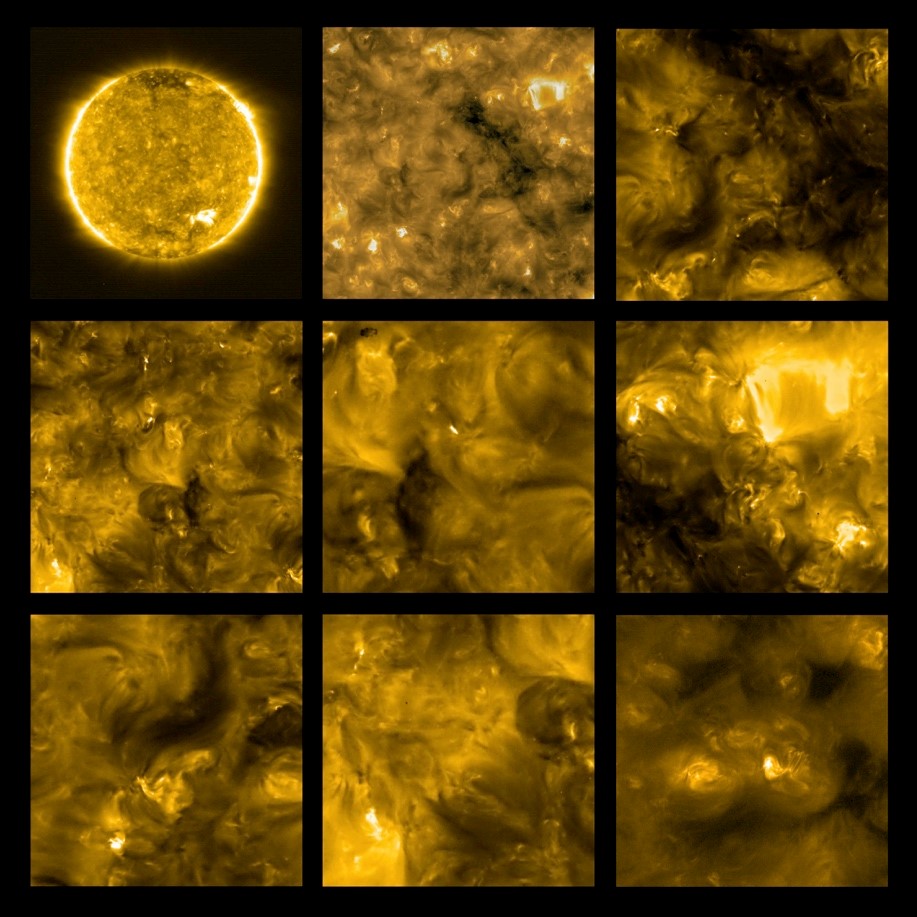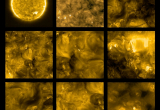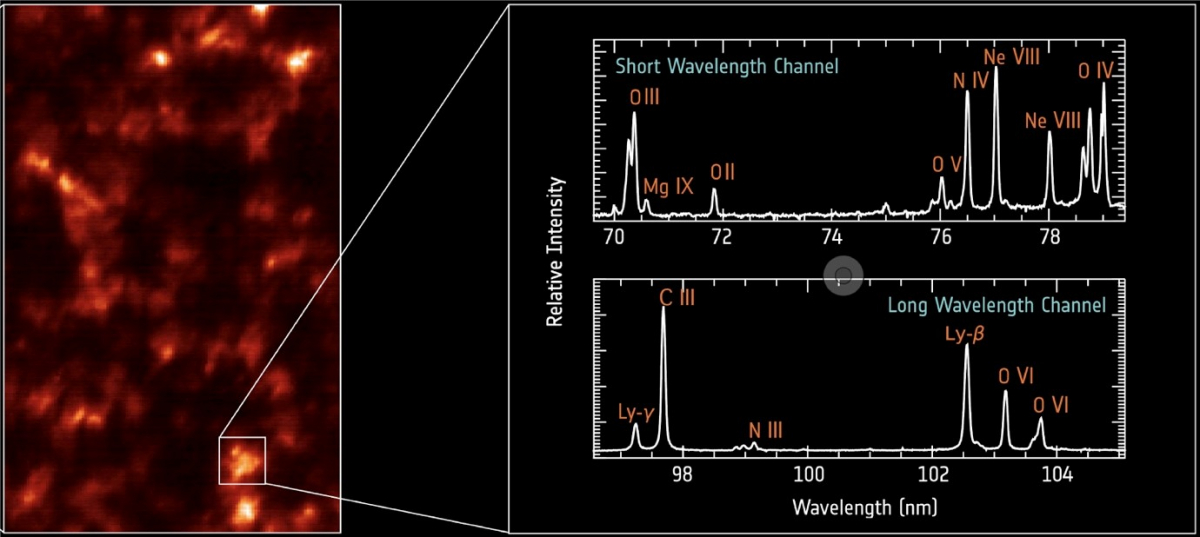First images from ESA’s Solar Orbiter
The first images from ESA’s new Sun-observing spacecraft Solar Orbiter have just been released. Solar Orbiter, launched on 10 February, completed its commissioning phase in mid-June and performed its first close approach to the Sun. Shortly thereafter, the European and US science teams behind the mission’s 10 instruments were able to test the entire instrument suite in concert for the first time.
Despite the setbacks the teams faced while commissioning the spacecraft and its instruments amid the COVID-19 pandemic, the first imaging campaign has been a great success. The ten instruments aboard the Solar Orbiter work flawlessly, making scientific teams confident that Solar Orbiter will help profound big, open questions about the Sun.
Telescopes the closest ever to the Sun
No other images of the Sun have been taken from such a close distance. During its first perihelion, the point in the spacecraft’s elliptical orbit closest to the Sun, Solar Orbiter got as close as 77 million kilometres from the star’s surface, about half the distance between the Sun and Earth. The spacecraft will eventually make much closer approaches to the Sun. The spacecraft is now in its cruise phase, gradually adjusting its orbit around the Sun. Once in its science phase, which will commence in late 2021, the spacecraft will get as close as 42 million kilometres from the Sun’s surface, closer than the planet Mercury. The spacecraft’s operators will gradually tilt Solar Orbiter’s orbit to enable the probe to get the first proper view of the Sun’s poles.
'Campfires' in the Sun's atmosphere
Solar Orbiter carries six cameras, each of which studies a different aspect of the Sun. The first images of a space mission confirm the instruments are working, without necessarily expecting new discoveries from them. However, the extreme ultraviolet imager (EUI), returned data hinting at solar features never observed in such detail: "campfires". These phenomena could be a reduced version of solar flares observed so far by solar satellites. It is possible they are “nanoflares”, omnipresent and theorized mini-flares, which could contribute to the heating of the solar atmosphere. To know for sure, scientists need a more precise measurement of campfires' temperature. Fortunately, spectral imagery of the coronal environment, or SPICE instrument, also on Solar Orbiter, does just that. "So we're eagerly awaiting our next data set" said Frédéric Auchère, principal investigator for SPICE operations at the Institute for Space Astrophysics in Orsay, France. "The hope is to detect nanoflares for sure and to quantify their role in coronal heating."
An international mission
Solar Orbiter is an international collaboration between ESA and NASA. France contributes in six of the ten instruments on board the Solar Orbiter mission. The Institute d'Astrophysique Spatiale (IAS, CNRS / Université Paris-Saclay) plays a significant role in three of the remote sensing instruments: the imaging spectrometer in the ultraviolet (SPectral Imaging of the Coronal Environment - SPICE) and the imaging in the extreme ultraviolet (Extreme Ultraviolet Imager - EUI) and the Polarimetric and Helioseismic Imager (PHI).
Contacts at IAS :
EUI - Frédéric Auchère
PHI - Thierry Appourchaux
SPICE - Eric Buchlin
 |
 |
|
First images from the PHI instrument
|
First images from the EUI instrument
|
First image and spectra from the SPICE instrument





